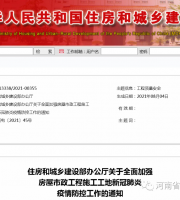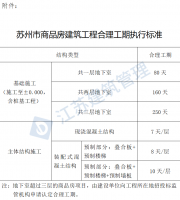Sprinkling raw water on the concrete surface increases the water cement ratio of the concrete surface, increases the gap of the hardened slurry, loosens the concrete surface, reduces the strength and anti carbonization ability of the concrete surface, and causes ash rising, sand returning and cracking on the concrete surface
.
In order to facilitate the finishing, the workers on the construction site sprinkled raw water, which was not stopped by the technicians on the construction site, which seriously affected the quality of concrete
.
The concrete is poured to the top at one time
.
Adding water to the commercial concrete and adding water to the concrete mixture will increase the water binder ratio of the concrete
.
The greater the water binder ratio, the lower the final strength of the concrete
.
When pouring the wall within 3M, it can be divided into two layers
.
6
.
3
.
Finally, it will be remedied by reinforcement, or even push it over and start again
.
The concrete has not been put into the formwork for a long time, and the concrete mixer truck on the construction site is overstocked
.
It is better to pour concrete after thinning with admixture; Some construction sites directly add water to dilute and then continue pouring, which is bound to cause insufficient concrete strength
.
When the slump of the concrete mixture is too small, the tank truck driver can add an appropriate amount of admixture to adjust the slump according to the technical disclosure of his company, so as to facilitate pumping construction
.
Removal of slab formwork in some construction sites, in order to catch up with the construction period, the concrete poured the first night will be removed the wall column formwork the next morning
.
8 when pouring concrete for walls and frame columns without layered construction, if the reinforced concrete columns and walls poured from the top are too high, the coarse aggregate in the concrete will be separated from the concrete and roll to the outside or bottom of the concrete pile, or in the process of dumping, the coarse aggregate will fall first and the mortar will fall behind, resulting in concrete segregation, The coarse aggregate is squeezed at the corners of the floor, which is easy to form “honeycomb”, “pitted surface” and “rotten root” or cause uneven distribution of sand and stone
.
Examination materials, exercises and real question volumes of various subjects in 2021
.
5
.
If the pouring concrete is placed in too high layers and ultra-high pouring is easy to cause formwork expansion, if it cannot be vibrated with pouring, it is easy to form cavities, exposed reinforcement and honeycomb and pitted surface due to incomplete vibration
.
When the vibration speed cannot keep up with the pouring speed, the pouring shall be stopped immediately and the pouring shall be started when the vibration personnel keep up
.
Moreover, the free fall height is too high, and the concrete has great impact force
.
4 add water before concrete finishing
.
The slump of concrete is too large
.
Especially in summer, it is not easy to pour concrete for more than 3H
.
The harm of unauthorized treatment of concrete quality defects
.
If the humidity is not enough, the concrete will lose water and dry, which will affect the normal progress of cement hydration, or even stop hydration
.
The normal pumping construction can be carried out only after the cementitious material is adjusted to 340kg / m3 again
.
If too much water is added, the strength of the concrete will not meet the design requirements and cannot pass the acceptance
.
The platform provides the most complete and professional guidance materials for constructors every year: 1
. Fixing Socket Angular End Nail Plate
The wall formwork is removed because the concrete strength is low and the joint working capacity of concrete and reinforcement is poor
.
Therefore, the ambient humidity has a significant impact on the normal development of concrete strength
.
That is, when the temperature is ≤ 25 ℃, the duration should not exceed 150 minutes; When the temperature is higher than 25 ℃, the duration should not exceed 120 minutes
.
This has caused great losses to construction enterprises
.
If the workability of pumped concrete is good and it is easy to vibrate and compact, the layer height can be increased to 1000 ~ 150mm
.
7
.
Due to improper pouring sequence and distribution, the sand and stone in the concrete components will be uneven, which will affect the concrete strength of the components and the occurrence of defects such as honeycomb, pitted surface and holes, cause hidden dangers to the project quality, and may also constitute a major quality accident
.
Add water to the ground pump at the concrete site, which is clearly stipulated in article 7.5.2 of GB / t14902-2012 ready mixed concrete standard: “the mixer truck shall drain the ponding in the mixing tank before loading, and it is strictly prohibited to add water to the concrete in the mixing tank after loading”
.
Therefore, before removing the formwork, it is necessary to check whether the concrete is finally set, and it is appropriate to scratch the top surface of the concrete with your fingernails without loose mortar, otherwise the formwork cannot be removed
.
Under the action of component self weight, construction load and other vibration, it is easy to cause the reinforcement to slide in the concrete, so as to reduce the gripping force of reinforcement; Premature formwork removal will lead to premature water loss on the concrete surface, accelerate the carbonization of the concrete surface and reduce the durability of the concrete
.
It will smash and bend the reinforcement and dislocation the stirrups of vertical members, which will affect the mechanical performance of members
.
The earlier the drying action, the more serious the dry shrinkage cracking, the looser the structure, the greater the loss of strength, the greater the carbonation of concrete surface and the lower the durability
.
11
.
9
.
When the temperature is normal, it is OK, but in case of cooling weather, it is too early to remove the formwork the next morning because the concrete has not yet set
.
If the concrete strength of slab formwork removal is lower than that of formwork removal, it is easy to crack in the tensile area and even damage the compression area, resulting in safety accidents; Premature formwork removal of concrete will increase the creep of concrete and lead to structural deformation; Early formwork removal: due to the low strength of concrete, it is easy to collapse edges and corners or local collapse during formwork removal, weaken the member section and affect the bearing capacity and appearance quality
.
If the formwork is removed too early, there will be formwork peeling or horizontal cracks along the stirrup (horizontal reinforcement)
.
The concrete pouring sequence of foundation and slab 10 is not in place
.
Some construction workers ignore this provision and use water pipes to add water to the pump bucket or tank barrel without permission in order to facilitate pumping and reduce the resistance of leveling; What’s more, regardless of the dryness and thinness of the incoming materials, put on the water pipe and pour while adding water
.
In 2021, video courses of all subjects and major online schools (universal, hi school, construction engineering, 233, Zhongye, Dali, Youlu, etc.) include intensive lecture, sprint, security course, pre exam simulation paper, security paper, the last three pages and other materials..
.
This is caused by the sinking of the concrete due to its own weight
.
In the construction process, due to ideological and technical defects, the construction unit will arbitrarily repair various defects of concrete components, such as honeycomb, pitted surface, cracks, exposed reinforcement and holes, but without reinforcement, which will cause lifelong defects of concrete engineering and affect the service life of the building, When testing concrete entities, it will affect the real judgment of concrete performance
.
It is clearly stipulated in article 6.6.9 of gb50164-2011 concrete quality control standard that “when pouring structures with large vertical dimensions, it shall be poured in layers, and the pouring thickness of each layer should be controlled at 300 ~ 350mm; And more vibrating rods can be arranged, which should be vibrated while pouring concrete, and should be formed continuously “
.
Article 7.4.2 of jgj55-2011 code for mix proportion design of ordinary concrete stipulates that “the amount of cementitious materials for pumped concrete shall not be less than 300kg / m3”
.
The pouring time is too long and the workers are tired
.
The concrete formwork is removed too early
.
2
.
The concrete is not constructed in layers
.
2
.
Therefore, the national standard clearly stipulates that it is strictly prohibited to add water to the concrete mixture
.
According to article 6.6.14 of gb50164-2011 concrete quality control standard, the duration from the discharge of the concrete mixture from the mixer to the completion of pouring shall not exceed the provisions of table 6.6.14
.
The concrete layer is too high
.
When pouring structural columns or secondary structures on the construction site, it often exceeds 180min, or even more than 300min
.
The concrete has less cementitious materials and insufficient strength
.
The water in walls and frame columns is the necessary condition for cement hydration reaction
.
In order to reduce the production cost, some mixing plants design the cementitious material in the mix proportion of low-grade concrete as 280 kg / m ³, Moreover, the cementitious material of C15 fine aggregate concrete mix proportion is also designed as 280 kg / m ³, As a result, a truck of C15 fine aggregate concrete blocked the pump for many times, and finally had to be poured out
.



